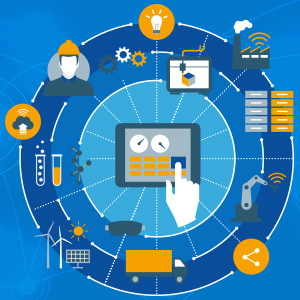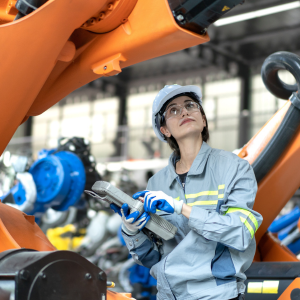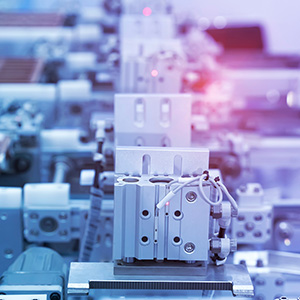How Industry 4.0 Is Changing Quality Assurance
Post By: Holly Shaw On: 22-03-2024 - Industry 4.0 - Industry Trends - Manufacturing
Industry 4.0 is becoming too generic for the various aspects of technological change in the 2020s. Perhaps we should consider things like design, manufacturing, maintenance and inspection as separate sectors, which all work together to effect the digital transformation of today’s industry. Quality 4.0 is a term that implies integrating the technological infrastructure and capabilities of Industry 4.0 into quality control activities.
Quality Assurance 4.0
When we think about Industry 4.0, we think first about its primary characteristics: fully-automated intelligent factories, the Internet and Industrial Internet of Things (IoT and IIoT), Artificial Intelligence (AI), Big Data and Machine Learning (ML). All new technologies go into autonomous systems, but the process still needs quality control. The aim of Quality 4.0 is to leverage the power of the fourth industrial revolution to embrace organisational excellence and update traditional quality management practices. Its primary focus is to improve overall quality by optimising the efficiency of quality assurance operations. A result of this will be to ease compliance and ultimately reduce costs.
How Quality Assurance Has Evolved
We must look at historical changes to understand how Industry 4.0 is changing quality assurance. Each successive industrial revolution has brought quality management innovations, dating from the first introduction of steam power to the most recent cyber-physical systems (CPS).
The 17th-century invention of steam power (Industry 1.0) enabled mechanical production. It replaced hand-made piecework, but quality control was limited to human inspection. In the 19th century, electricity brought assembly lines and mass production (Industry 2.0). Larger-scale endeavours required more precise quality control and some assurance of product authenticity. These were imposed using military-style benchmarks, which evolved into internationally recognised QMS standards.
The 20th century it ushered in the age of information and communication technology (ICT) based on electronics. This represents Industry 3.0, where quality management software was developed for control, planning, and improvement. Industry 4.0 is our 21st-century age of advanced technological development, with networked communications, smart devices, and CPS. This flexible and distributed production requires continuous quality control, real-time data and IIoT management.
What Are The Features of Quality 4.0?

Connectivity
Connectivity is the glue that holds all the sectors of Industry 4.0 together. It represents the rapid, seamless and constant exchange of information passing between the various parts of the network. It’s enabled by sensor networks, edge & cloud computing and IoT gateways, providing continuous real-time feedback.
Quality 4.0 relates explicitly to connections between enterprise resource planning (ERP), the various devices used on the production floor and product lifecycle management.
AI
The adoption of intelligent machine control has been this century’s most significant industrial advance. Computers have been developed to replicate human thought patterns but take them far beyond the capacity of human beings. They can perform multiple computational tasks in a fraction of the time and process their findings to improve system performance. Regarding Quality 4.0, AI can use information gathered by sensors to make extreme precision measurements and adjustments, predict potential failures and pick out the most minute infringement of standards.
Data
The driving force behind AI is the collection of data in such vast amounts that it’s known as Big Data. This is crucial to quality control as it promotes continuous improvement. Collecting and analysing robust data allows the formulation of plans for quality improvement. The connected devices supported by Industry 4.0 technology provide masses of accurate real-time data, which helps promote agile decision-making.
Analytics
Analytics are essential in data processing and mostly mean interpreting the data once it’s been collected. Quality 4.0 also allows for prescriptive analysis, using the data to forecast future activity. This way, failures or particular actions can be anticipated, and appropriate solutions can be formulated.
Scalability
Quality 4.0 technology provides companies with a greater capacity to cope with data volume and analytics. With more devices and more users, the company’s scalability can increase. All their systems and data sources can be combined in one place – and on a much larger scale than was previously possible.
Management Systems
Digital Quality Management (DQM) Systems can now leverage the various components of Industry 4.0 technologies to focus more closely on quality iteration and improvement. DQM relies on centralised digital processes that apply comprehensive quality standards across the whole lifecycle of assets and products, such as design, documentation and compliance.
Compliance
Compliance is often imperative in quality management, especially in life sciences. With Quality 4.0, compliance processes are digital and automated, providing better quality control at less cost.
No-code Apps
Quality 4.0 is aimed at maintaining continuous, consistent quality. It requires IoT connectivity to collect, store and process real-time data wherever it may be generated. This means each area of a plant requires an IoT-enabled system and an interface that is precisely suited to each type of data being generated. No-code apps fulfil this function, allowing existing processes to be digitally transformed without requiring expert installation. Quality 4.0 needs can be fully customised to current QMS and goals using simple apps with drag-and-drop features. Appropriate interfaces for quality management tasks are easy to roll out and are easily adaptable to evolving quality processes.
Transitioning to Quality 4.0
Adopting Quality 4.0 can seem daunting, as it’s completely removed from traditional quality assurance methods. Bringing in new technological equipment and specs can be difficult initially, but the fundamental transformation will occur in quality processes and management. It requires total commitment to recognising Quality 4.0 as enhancing previous quality assurance methods. Instead of building a new QMS from the ground up, the most innovative business leaders re-evaluate how quality management should best be conducted in the digital era.
Get More From Rowse Straight To Your Inbox




